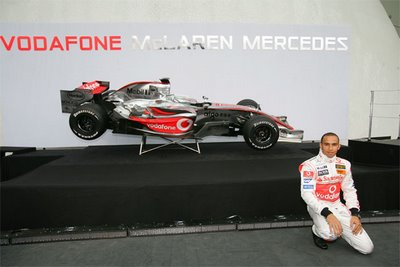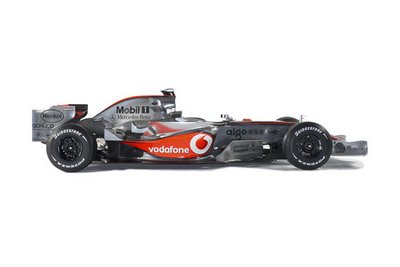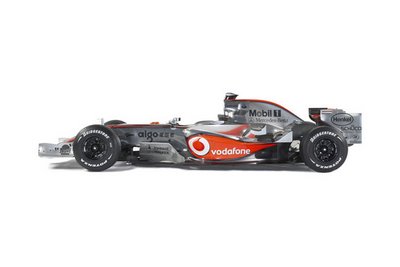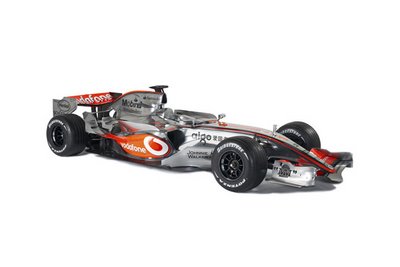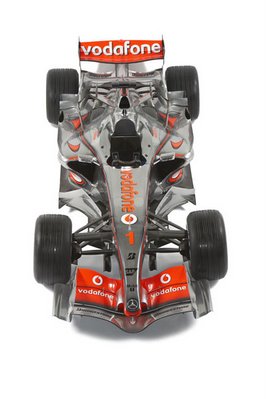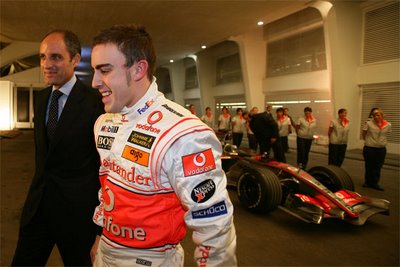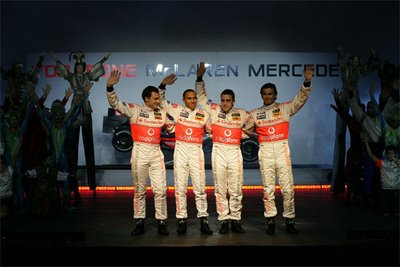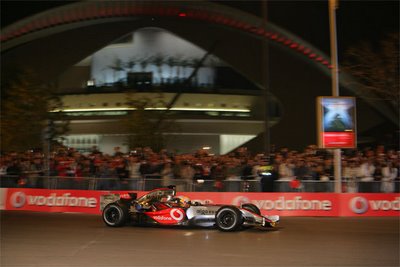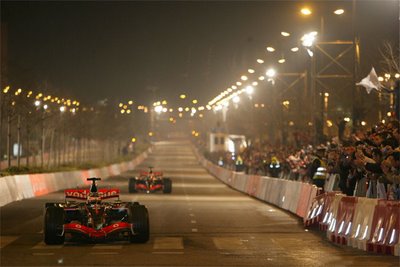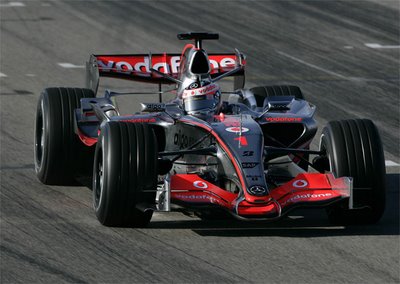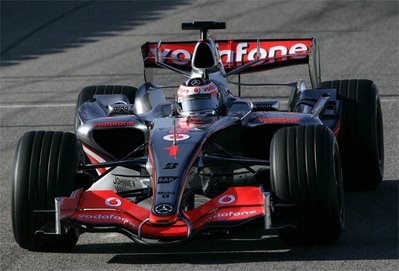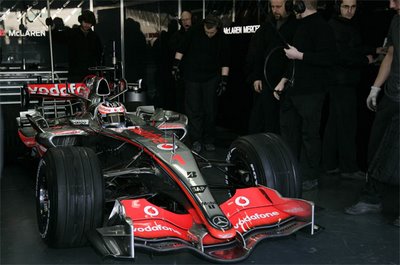Tuesday, January 16, 2007
Vodafone McLaren Mercedes 2007 challenger unveilled :::MP4-22:::


The Vodafone McLaren Mercedes MP4-22, raced by Fernando Alonso and Lewis Hamilton, features some advanced engineering concepts.
With some novel aerodynamic solutions, allied to unprecedented levels of efficiency in its crash structures, the car showcases the engineering strength in depth of McLaren Racing and Mercedes-Benz High Performance Engines.
Although Formula 1 teams are admired throughout industry for their leading edge technology and short development times, long-term planning has also been crucial in the construction of the MP4-22.
Its development period commenced before its predecessor the MP4-21 had even turned a wheel. Initial sketches of aerodynamic concepts and discussions over the design of the clutch and gearbox took place back in December 2005. During the design process, each of the car's 11,000 components were reviewed in meticulous detail in the quest for improved performance, reliability and efficiency.
The MP4-22 represents the latest research and development concepts. Initial ideas were developed with Computer Aided Design (CAD) in mid-March 2006, with the first Computational Fluid Dynamics (CFD) simulations running later that month. The wind tunnel programme commenced in May.
The design also incorporates three demanding new pieces of crash protection legislation. A totally new rear crash structure is noticeably wider and blunter than its predecessor. An extra 6mm-thick laminated panel is now also required to be bonded to the side of the driver cell to guard against penetration from another car or object. Frontal protection for the driver has been improved too, with the velocity of impact in the crash test raised from 14 to 15 metres per second, with a softer deceleration both front and rear.
Other regulation changes that have impacted on the design process include the use of a homologated engine for 2007, and the switch to a single tyre supplier.
The construction and profile of the Bridgestone Potenza tyres have had an influence on the MP4-22's chassis dynamics and significantly the aerodynamics . The tyres affect the flow structures downstream of the front wheels, and the team's engineers have used CFD software – for the simulation of heat and fluid flow – to devise the optimum solution to harness the new rubber.
With such detailed simulation increasingly vital in Formula 1, the infrastructure, manufacturing capacity and technical tools available to the design team at the McLaren Technology Centre have played an important role. The MP4-22's development involved the generation of generation of 4,500 component and 3,500 tooling drawings, and the aerodynamics development is very demanding with a continuous program which requires an entirely new set of wetted surfaces for the launch car, with around a third being updated before the first race. This is followed up with new aero components being brought to the car every 3-4 weeks throughout the season.
Following the MP4-22's first test in January 2007, development will continue apace on the track and at the McLaren Technology Centre before it's race debut on Sunday 18 th March at the Albert Park circuit in Melbourne , Australia .
VODAFONE McLAREN MERCEDES MP4-22 TECHNICAL SPECIFICATION
Engine
Type Mercedes-Benz FO 108T
No. of cylinders 8
Fuel Mobil 1 Unleaded
Lubricants Mobil 1 products
Engine 95kg
Transmission
Gearbox Speeds Seven forward and one reverse
Semi-auto Yes
Driveshafts McLaren
Clutch Hand-operated
Chassis
Chassis McLaren moulded carbon fibre/aluminium honeycomb composite incorporating front and side impact structures. Contains integral safety fuel cell
Front Suspension
Inboard torsion bar/damper system operated by pushrod and bell crank with a double wishbone arrangement
Rear Suspension
Inboard torsion bar/damper system operated by pushrod and bell crank with a double wishbone arrangement
Suspension Dampers
KONI
Electronics
McLaren Electronic Systems control units incorporating electronics for chassis, engine and data acquisition. McLaren Electronic Systems also supplies the electronic dash board, alternator voltage control, sensors, data analysis and telemetry systems
Bodywork Construction
One-piece sidepod and engine cover. Separate floor section, structural nose with integral front wing.
Tyres
Bridgestone Potenza
Radios
Kenwood
Race Wheels
Enkei
Batteries
GS Yuasa Corporation
Steering
McLaren power-assisted
Instruments
McLaren Electronic Systems
Adhesives
Henkel Technologies
Brake
Calipers Akebono


